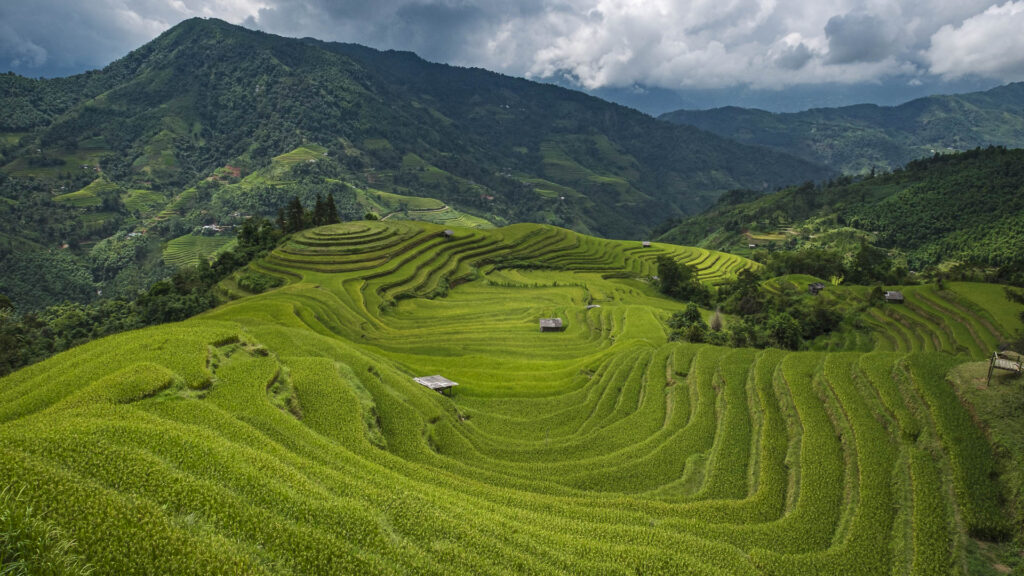Ha Giang
A Hidden Frontier for Photographers & Cultural Travelers
Culture
Ha Giang is a cultural treasure trove, home to more than 20 ethnic minority groups, each with their own language, dress, and traditions. The Hmong, Dao, Tay, Lo Lo, and Giay people live in hilltop villages where life follows the rhythm of the seasons and ancient customs are preserved. Visitors can experience traditional crafts like indigo dyeing, bamboo weaving, and blacksmithing, and participate in local festivals full of music, food, and ritual.
Spots of Interest
- Dong Van Old Quarter: A blend of French colonial and Hmong architecture nestled in a rugged valley.
- Lung Cu Flag Tower: Vietnam’s northernmost point with panoramic views over China’s borderlands.
- Meo Vac Market: A lively ethnic market offering insight into highland trade and culture.
- Vuong Palace (Hmong King’s Palace): A beautifully preserved 20th-century residence with royal Hmong architecture.
Scenic Beauty
Ha Giang’s landscapes are some of the most striking in Southeast Asia. From razor-sharp limestone karsts to lush river valleys, it’s a place where the natural world dominates. The Ma Pi Leng Pass — part of the legendary Ha Giang Loop — offers vertigo-inducing views over the emerald Nho Que River. Misty mornings and golden sunsets make every bend in the road a visual masterpiece.
Ethnic Diversity
The province’s ethnic mix adds incredible depth to any journey. Traditional dress, spoken dialects, and housing styles vary from village to village. You might encounter Lo Lo women in elaborate embroidered headdresses or Red Dao elders performing herbal medicine rituals. This diversity isn’t staged — it’s lived culture, visible in everyday life and community gatherings.
Cultural Highlights
- Khau Vai Love Market (held annually in April): Former lovers meet again in this emotional, colorful event.
- Weekly Village Markets: Held in Dong Van, Meo Vac, and Yen Minh, offering a window into mountain trade, cuisine, and attire.
- Local Homestays: Staying with a local family is the best way to immerse yourself in the culture, cuisine, and rhythms of daily life.
Natural Attractions
- Dong Van Karst Plateau: A UNESCO Global Geopark with ancient rock formations and striking geological diversity.
- Du Gia Waterfalls: A hidden gem perfect for cooling off during treks or scenic photos.
- Tham Ma Pass: A winding stretch of road ideal for motorbike enthusiasts and photographers.
Adventure Opportunities
The Ha Giang Loop, typically a 3–5 day motorbike route, is Vietnam’s ultimate road trip — remote, rugged, and rewarding. Trekking routes connect hidden ethnic villages, and the terrain offers challenges for hikers, bikers, and nature lovers alike. Local guides can lead off-the-beaten-path journeys that reveal the province’s lesser-known charms.
Photography
For photographers, Ha Giang is a visual feast. From the vibrant textiles of ethnic groups to vast mountain backdrops and mist-shrouded terraces, every scene is layered with texture and emotion. Golden light at sunrise and sunset paints the landscape in a warm glow, while markets, rituals, and daily routines provide rich opportunities for candid shots and environmental portraits.
Best Time to Travel
- September–November: Cool weather and golden rice terraces.
- March–May: Blooming buckwheat and peach blossoms.
- December–February: Cold but atmospheric, with fog and occasional snow at higher altitudes.
Avoid: June–August for heavy rains and potential road conditions.



